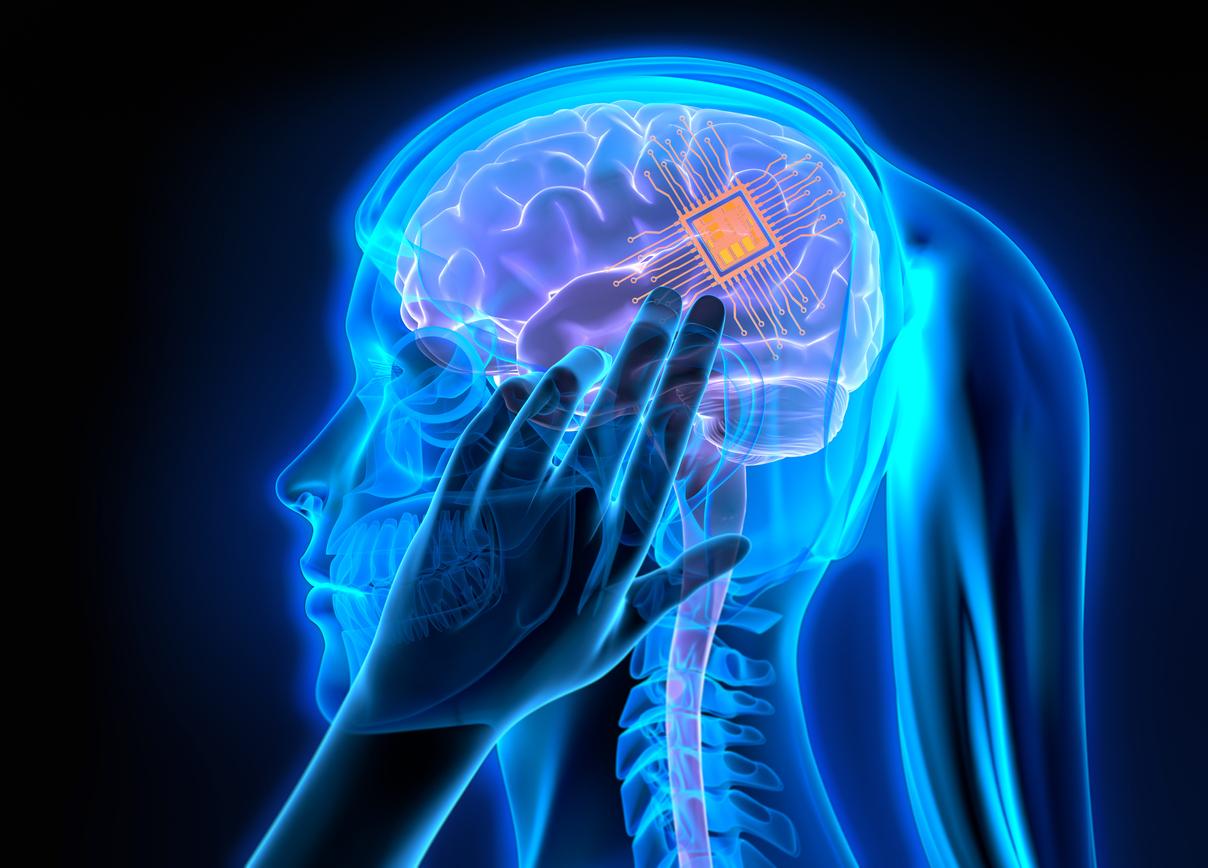American researchers have developed an implant that can convert brain signals into words to provide a means of communication for people who are unable to speak.

- American scientists have developed an implant, the size of which is similar to that of a postage stamp.
- This device houses 256 microscopic brain sensors allowing users to interact with a computer via brain activity.
- Overall, the decoder was accurate 40% of the time. For some sounds and participants, it worked 84% of the time when analyzing the first sound of a word.
Amyotrophic lateral sclerosis, Parkinson’s or Huntington’s disease… Many people with neurodegenerative pathologies often lose the ability to communicate, which harms their quality of life. “The tools currently available to allow them to speak are generally very slow and tedious,” said Gregory Cogan, professor of neurology at Duke University (United States), in a statement. According to him and his team, the solution to restoring communication is to decode signals directly from the brain to allow the creation of neural prostheses.
Brain: the implant houses 256 tiny sensors
However, decoding has been limited by neural recordings that do not adequately capture the rich spatiotemporal structure of brain signals. According to scientists, the best speech decoding rate currently available is around 78 words per minute, while people use around 150 words per minute. The mismatch between spoken and decoded speech rates is partly due to the relatively small number of brain activity sensors at the top of the brain surface. Simply put, fewer sensors provide less decipherable information to decode.
In order to overcome the problem, American researchers decided to create a brain implant. To do this, they packaged 256 microscopic brain sensors onto a postage stamp-sized piece of flexible medical-grade plastic. Neurons a grain of sand apart can have very different activity patterns when coordinating speech. “It is therefore necessary to distinguish signals from neighboring brain cells to help make accurate predictions about speech.”
In 40% of cases, the implant decoder was accurate
After manufacturing the device, they wanted to test it on four patients. As part of a study, published in the journal Nature Communications, the authors temporarily placed the implant in people who were undergoing brain surgery. During the procedure, which took place in the operating room, participants heard a series of nonsense words, such as “ava” or “kug,” then said each one out loud. The device recorded the activity of each volunteer’s speech motor cortex, as it coordinated nearly 100 muscles that move the lips, tongue, jaw and larynx.
Next, the team took the neural and vocal data from the operating room and fed it into a machine learning algorithm to see how accurately it could predict what sound was made based on the recordings of brain activity alone. For some sounds and participants, the decoder worked 84% of the time when examining the first sound. In contrast, accuracy decreased as the decoder analyzed sounds in the middle or end of a nonsense word. It was also difficult if two sounds were similar, such as “p” and “b”. Overall, the decoder was accurate 40% of the time.
A wireless version of the device
Now, scientists will create a wireless version of the implant. “You will be able to move around and you will not need to be tied to an electrical outlet,” said Gregory Cogan. While their work is encouraging, they know there is still a long way to go before the prosthesis will soon be available. ““We’re at the point where speech is still much slower than natural speech, but you can see the trajectory to where you can get there.” added Jonathan Viventi, who participated in this work.

















